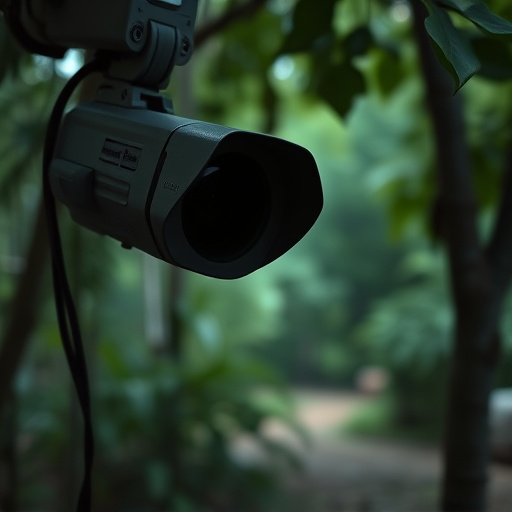Renters can protect their privacy by understanding and countering electromagnetic signals from security cameras. Investing in Discrete Security Cameras for Renters with minimal EMF emissions ensures safety while preserving privacy. Strategic placement, high-quality equipment, and Wi-Fi connections reduce interference, fostering a peaceful living environment.
In today’s world, understanding the electromagnetic field (EMF) emissions from surveillance devices is crucial for maintaining privacy. This article guides you through the process of detecting and mitigating EMF signals from cameras, focusing on discrete security solutions ideal for renters. We’ll explore tips for identifying subtle EMF leaks, recommend low-emission camera options, and share effective placement strategies to minimize your exposure. Stay informed and secure with these practical insights into discreet security cameras for renters.
- Understanding Electromagnetic Signals from Surveillance Devices
- Tips for Discreetly Detecting EMF Emissions from Cameras
- Choosing Secure, Low-Emission Security Cameras for Tenants
- Effective Placement Strategies for Minimizing EMF Impact
Understanding Electromagnetic Signals from Surveillance Devices
Surveillance devices, often discreet security cameras for renters, operate by emitting and receiving electromagnetic signals to transmit video and audio data. Understanding these signals is crucial for their detection and mitigation. Different types of surveillance equipment use various wireless technologies like Wi-Fi, Bluetooth, or proprietary radio frequencies.
Rental properties with such devices installed emit unique signal patterns that can be identified using specialized detectors. For renters concerned about privacy, it’s essential to know these signals are detectable through advanced electronic countermeasures. By understanding the electromagnetic landscape of a space, individuals can take proactive steps to minimize potential interference and protect their personal data.
Tips for Discreetly Detecting EMF Emissions from Cameras
When it comes to discreetly monitoring your space, especially as a renter, understanding electromagnetic field (EMF) emissions from security cameras is key. Many modern cameras emit detectable signals that can reveal their presence and location. To maintain privacy, consider these tips for identifying and minimizing EMF leaks associated with camera surveillance.
One effective approach is to opt for discrete security cameras specifically designed for renters. These models often employ more subtle design elements and advanced technology to reduce their electromagnetic footprint. Additionally, regular maintenance and positioning play a role. Ensure your cameras are properly calibrated and positioned away from other electronic devices to minimize interference. Testing with EMF detectors can help pinpoint exact locations of emissions, allowing you to take targeted measures for enhanced privacy.
Choosing Secure, Low-Emission Security Cameras for Tenants
When considering security, tenants often look for discrete solutions that won’t disrupt their living space. Choosing low-emission security cameras is a smart move for renters who want to maintain privacy while ensuring safety. These cameras are designed with minimal electromagnetic field (EMF) emissions in mind, addressing concerns about potential health impacts associated with high-emitting devices.
Opting for discrete security cameras allows tenants to install them without drawing unnecessary attention. Advanced technology now enables these cameras to capture high-quality footage using less power, making them environmentally friendly and ideal for indoor and outdoor use. By selecting models with low EMF radiation, renters can create a safe environment while respecting their neighbors’ peace of mind.
Effective Placement Strategies for Minimizing EMF Impact
To effectively minimize the impact of electromagnetic signals from surveillance devices, strategic placement is key. For renters considering discrete security cameras, positioning them away from sensitive areas like beds and electronic equipment can significantly reduce EMF exposure. High-quality cameras with adjustable mounting options allow for optimal placement while maintaining discretion.
Additionally, using extension cables or power strips to create distance between the camera and its power source can further lower EMF emissions. Opting for cameras that utilize wireless connections like Wi-Fi instead of Bluetooth or direct cable links can also help minimize electromagnetic interference from nearby devices.
Surveillance devices, while essential for security, can emit potentially harmful electromagnetic signals (EMF). By understanding these signals and employing discreet detection techniques, renters can make informed choices. Opting for low-emission, secure cameras and strategically placing them reduces EMF impact. This approach allows for enhanced privacy without compromising well-being. When considering discrete security cameras for renters, prioritizing low-EMF options and thoughtful placement is key to achieving a balanced home environment.
